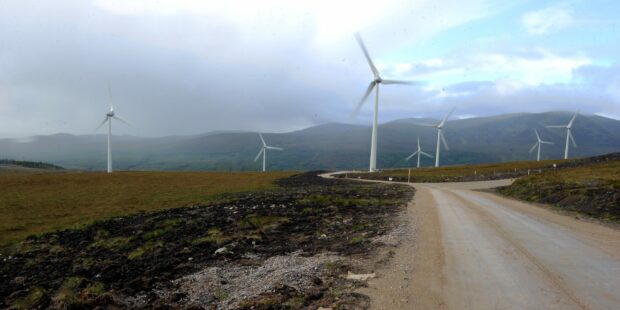Sir, – Storm Arwen caused major damage to a number of wind farms, particularly in the north and north-east. Some 150 turbines in a company’s stock of 500 have been damaged or knocked out of action. Novar in Ross-shire, one of the earliest wind farms, has a number of faults for the engineers to sort out.
Where the power has been knocked out for days, now wind farms will not be in action because each turbine needs electricity to get it to start.
Thank goodness we have gas, hydro, coal and nuclear power to provide alternatives.
Michael Baird, Dornoch Road, Bonar Bridge.
New legislation on trees is required
Sir, – Because the UK is on the northern edge of the Atlantic Ocean we will always have intermittent periods of exceedingly high wind speeds and so it must be expected that, due to lack of the necessary legislation, overhead powerlines will be brought down at times by falling trees and cars will be crushed by massive trees that are allowed to grow so close to the roadside.
This will continue until legislation is brought in to put upon landowners the responsibility to fell trees growing on their land if they fall into one of two categories: They are over 12 feet tall (three metres) and growing to be within striking distance of an overhead power line; or they are over 12 feet tall (three metres) and growing within falling distance of a public highway.
I suggest that such legislation will both save lives and reduce the necessity of so many families having to spend days on end at home without any power at all.
Archibald A Lawrie, Church Wynd, Kingskettle, Fife.
Time to remove hazardous trees
Sir, – In the aftermath of recent storm damage, what should learn from our experience? Climate change models predict extreme such events will increase considerably in frequency and be more extreme.
Road blockage by windblown trees is one aspect to consider. It is a danger to life and just when emergency services most need access to mend powerlines, deliver emergency food supplies etc. Some such blockage was inevitable but a significant amount of it was avoidable.
Many roads in Aberdeenshire have had clearly vulnerable trees such as dead elms alongside them for many years. Many fell in the gale but others remain. Roads department staff approached about this simply say hazardous trees are the landowners’ responsibility.
Yes, but it is the local council’s responsibility to ensure road safety and therefore to act if landowners or others tolerate such a hazard.
Understandably, landowners may be reluctant to meet costs of tree removal, especially if costs of road closures are included.
Is it therefore not time Aberdeenshire and other councils need to take an overall look at this situation.? They need to survey hazardous roadside trees and develop an integrated approach to remove them before future disasters, hopefully minimising costs to landowners?
RD Watson, Forbes, Alford.
Power emergency was preventable
Sir, – Is it just me or does anyone else feel that a large number of failures could have been prevented by a little forethought?
From the majority of picture reports I have seen, the common theme is trees falling on powerlines.
I ask the question why are these trees allowed to grow to a size in a location that guarantees if they fall they take out the powerlines.
I understand that utility companies have the right to access property for the maintenance and repair of the infrastructure belonging to them, at least that is the terms of my land ownership.
I accept the failure of individual assets due to isolation and exposure but I cannot accept what to me is dereliction of the duty of care the electricity companies owe to customers.
So far it is only good luck and the spirit of looking after neighbours that no deaths have happened.
I trust that in the resume of the episode lessons will be learned and never again will we have what in my opinion was largely a preventable emergency.
Roderick C McKay, Croft Road, Forres, Moray.
